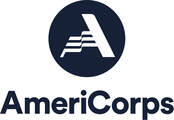|
By Crystal Wimer, Preserve WV AmeriCorps serving at Harrison County Historical Society
Recently, I read a new book on how to sustain historic house museums entitled Anarchist Guide to Historic House Museums. The authors, Frank Vagnone and Deborah Ryan, theorize that the key to sustainability lies in more community engagement and a more balanced approach when it comes to preserving its collection and improving visitor experiences. Historic house museums are not just storehouses for artifacts, but should be interpreted as places for community engagement and dialogue. Often, the Harrison County WV Historical Society struggles to get feedback regarding its programming and from its volunteers, and I was ready to experiment with new methods for better community engagement. As I was reading the Anarchist Guide, I unintentionally tested Vagnone and Ryan’s theories on community engagement with my volunteers. Then later, I deliberately used them on a recent tour of the Stealey-Goff-Vance House. I discovered there was better engagement with our historic house museum and the HCWVHS when I encouraged physical interactions with our artifacts. Unbeknownst to me at the time, my first “test subjects” were our volunteers. The artifact collection housed in the rear display room and dining room had to be packed in preparation for repairs to the foundation of the Vance House. I’ve had trouble retaining volunteers to work in the archives, so I believed that working with the collection in the house would produce a similar outcome. To my surprise as my volunteers worked with artifacts week after the week, the more they kept dropping hints about wanting to reorganize artifacts in other rooms of the house. The question I heard over and over for five weeks was “Well, once we’re done with this, what’s next?” Apparently, our volunteers formed a connection while handling the artifacts when they were packing them for storage. For them, the packing process was like uncovering rare treasures. Their fascination with our collection inspired them to want to assist more with reorganizing the collection and unpacking it when the preservation work is over. Since the packing finished, these new volunteers have been regulars at our open meetings and programs. Now, my volunteers may have been unknowing “guinea pigs,” but my Vance House tour with the Stealey family was a planned trial of the Anarchist Guide’s theories. Previous house tours were restricted to the main floor, and we typically didn’t allow visitors to sit on the furniture or handle the artifacts. The Anarchist Guide; however, advocates letting visitors handle stable artifacts and giving them access to areas previously off-limits. So, this is exactly what I did with the Stealey family on their tour. The Stealeys were permitted to visit all locations in the house including the basement, attic, and artifact storage areas. Visitors rarely get to see the house’s original electric switch because it’s in the attic’s gable, but they did on this tour. If one of the children wanted to see an artifact up close, I brought it down and once I determined it was stable for them to handle, I let them. They also excitedly took advantage of the open invitation to take as many photographs as they wanted. During the tour, the Stealeys still learned about the history of the Vance House, but this Anarchist-style tour was so much more personal because they had the freedom to explore every aspect of the house. I knew the tour was a success just based on the high level of enthusiasm from the family at the time. But, it wasn’t until I received an email from Mr. Stealey the following week that I officially knew these Anarchisttechniques should be something the HCWVHS does for future tours. Mr. Stealey wrote: “Thanks so much for taking time to show us the house. We really enjoyed the informative tour. You did a great job with a lot of information/history to tell/show us. My kids keep saying that they could not believe that you let them look at and pick up stuff.” Again because they were allowed to connect to the artifacts and the house, they were actively engaged with history, and they had a unique experience at the Vance House that they will remember years later. So through my experiences, it seems Vagnone and Ryan’s theory on better community engagement through making connections with artifacts works. Through their engagement with our artifacts, the newer volunteers are eager to start new projects at the Vance House, and the Stealey family had a unique experience that they won’t forget because most museums don’t allow visitors handle the artifacts. So, I encourage West Virginia’s historic house museums to give their visitors access to their artifacts. Because who knows? Those visitors could turn into new volunteers, members, or possible donors, and I don’t know of any historic house museum that wouldn’t want more people caring about history. This position is made possible through an AmeriCorps State and National Grant provided by the Corporation for National and Community Service and Volunteer WV. Comments are closed.
|
News and NotesCategories
All
Archives
May 2024
Subscribe to our mailing list to receive e-news updates on historic preservation news and events in West Virginia.
|
Get Involved |
Programs |
Contact UsPreservation Alliance of West Virginia
421 Davis Avenue, #4 | Elkins, WV 26241 Email: [email protected] Phone: 304-345-6005 |
Organizational Partners:
© COPYRIGHT 2022 - PRESERVATION ALLIANCE OF WEST VIRGINIA. ALL RIGHTS RESERVED.

 RSS Feed
RSS Feed



